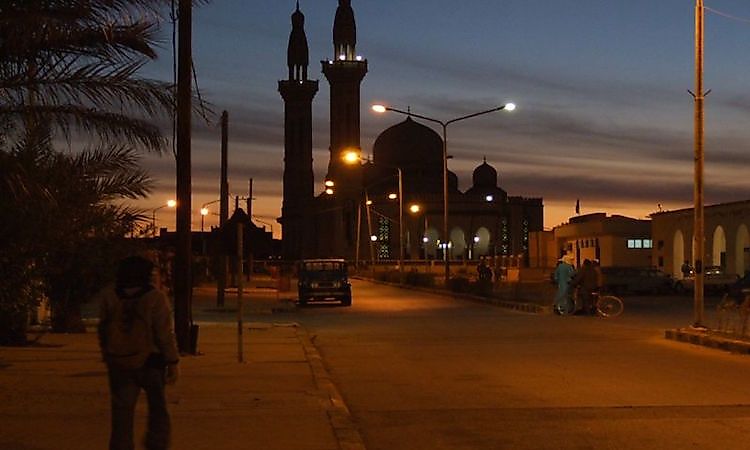UNESCO World Heritage Sites In Libya

The country of Libya is a country located in North Africa and is bordered by the Mediterranean Sea along its northern coastline while the rest of the country is basically covered by the vast Sahara Desert. Libya has been known to have been inhabited since 8,000 B.C. and has been ruled by many groups from the Phoenicians, Romans, Egyptians, Vandals, Ottomans and Italians, and others. Libya currently has five different UNESCO World Heritage sites, with all of them being designated in the 1980s.
Some Of Libya's UNESCO World Heritage Sites
Cyrene Archaeological Site
The Cyrene Archaeological Site was designated as a UNESCO World Heritage site in 1982 and is located in the District of Ghebel Akhdar in the northeastern part of the country, sitting right near the Mediterranean. The site of Cyrene was originally a colony for Greeks from the island of Thera, now known as Santorini, that was founded around 630 BC. The city changed hands from Greek to Roman control in 96 BC when the last Greek Cyrenaean King Ptolemy Apion (c. 150 to 96 BC) left the city to the Roman Republic (509-27 BC) in his will. The city was one of the important cities in the ancient Hellenic world and was a great capital until 365 AD when a great earthquake hit that the city never recovered from on top of a previous earthquake that happened before in 262 AD. Today the ruins of the once great city served to help archaeologists learned about how ancient Greeks and Roman lived, built and integrated into North Africa.
Leptis Magna Archaeological Site
The Leptis Magna Archaeological Site was designated as a UNESCO World Heritage site in 1982 and is located in the District of Khoms in the northwestern part of the country, sitting close to the Mediterranean. The city of Leptis Magna was originally founded by the Carthaginians at some point in the 7th century BC although not much is known about the early period of the city. In 146 BC the city became part of the Roman Republic at the end of the Third Punic War (149-146 BC). The city rose to prominence during the reign of Roman Emperor Septimius Severus (145-211), since it was his hometown. In 439 the Vandal King Gaiseric (c.389-477) captured the city and demolished its walls. In 533 the Byzantine general Flavius Belisarius (c. 505-565) recaptured the city. Under Byzantine rules, the city was often attacked by Berber tribes. The city stayed in decline until 647 when the Arabs conquered the city, and it was completely forgotten about by the 10th century. Today the ruins of Leptis Magna served as one of the most well preserved Roman ruins in the Mediterranean region for studying the Romans.
Ghadamès Old Town
Ghadamès Old Town was designated as a UNESCO World Heritage site in 1986 and is located in the Nalut District in the northwestern part of the country, sitting right near the border Libya shares with Tunisia and Algeria. The area is believed to be one of the oldest pre-Saharan settlements since evidence indicates that the area has been settled since some point in the 4th millennium BC. The settlement was known to the Romans as Cydamus that was controlled by the Garamantes until about 19 BC when Roman proconsul Lucius Cornelius Balbus the Younger (c. 80 BC-?) took the city for the Romans. A permanent military presence by the Romans did not take place until around 200 AD but soon after the Romans abandoned the city completely during the Crisis of the Third Century (235-284). After this, the city lingered in irrelevance until the 7th century when the Muslim Arabs conquered it. The city became an important base during the Trans-Saharan trade up until the 19th century. Today the Ghadamès Old Town serves as an outstanding example of what a traditional settlement looks like from its architecture and layout.
The Current Threats To Libya's UNESCO World Heritage Sites
The Cyrene Archaeological Site is facing a vast number of threats from surface water pollution at the site, to the encroachment of housing, crop production, and livestock grazing near and at the site. The site has also suffered from some deliberate destruction. All of this is because the site has had a complete lack of management and governance due to the resulting fallout from the Libyan Civil War in 2011, ongoing civil war since 2014 and its location in relation to these events. The Leptis Magna Archaeological Site had suffered from flooding in the early 1990s, but these issues were shortly resolved. During the Libyan Civil War in 2011, there were reports that the site was being used as cover by pro-Gaddafi forces, but this was never confirmed. Ghadamès Old Town main issue is that in the 1990s the area was depopulated of its inhabitants and since then there have been maintenance issues with the buildings since are not being lived in and are prone to collapse.
UNESCO World Heritage Sites In Libya
| UNESCO World Heritage Sites in Libya | Year of Inscription; Type |
| Cyrene Archaeological Site | 1982; Cultural |
| Ghadamès Old Town | 1986; Cultural |
| Leptis Magna Archaeological Site | 1982; Cultural |
| Sabratha Archaeological Site | 1982; Cultural |
| Tadrart Acacus Rock Art Sites | 1985; Cultural |











